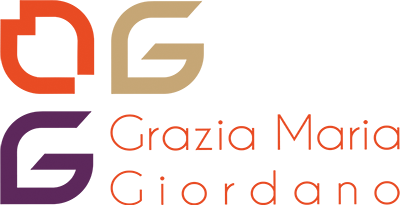Here is a new blog from the “What if it’s a movie” series. In this case inspired by one of the significant and increasingly current themes in the organizational field: collaboration in the workplace between different functions and departments.
As you may have already understood from the previous blogs of the series, often during my workshops I use videos taken from films or TV series to explain different concepts. Movies and TV series that we all watch offer an immediately tangible example, which many people can relate to. Understanding a concept is thus much simpler and more effective.
But let’s go back to today’s topic: collaboration in the workplace between different functions and departments.
Organizational structure: support or obstacle to growth?
Modernly structured companies, especially if they are larger, all have a well-defined organizational form.
The most common are functional organizations, in which people are organized in homogeneous areas by type of activity, and divisional ones, where people are organised according to a dimension of the business (e.g. product or market). There are many other types of organizational structure that meet different criteria and are adopted based on the specific needs of the business in question. For an overview, you can also look here.
In each of these cases, the activities of the people who work in the company are determined by the “Silos” to which they belong, meaning by “Silos” the different pieces (functions or divisions) that make up the organization itself.
The typical silos of a functional organization are for example sales, marketing, administration and finance, customer service, research and development etc.
The typical silos of a divisional organization are for example Small customers, Large customers, or Paints, Glues and Solvents or even Cleaning products, Beauty and Health products and Paper etc.
When used correctly, the different types of organization, provide companies with the necessary support to work and produce results. They promote the development of knowledge around specific themes; they also develop a sense of accountability and focus on results.
These are all positive aspects, but the reality is not always so bright.
In an ideal world, the silos should be transparent and allow those outside to understand how they work and to reassure them that they work in the best interest of the organization. And they should also be permeable, to allow information to enter and exit the silo and therefore allow others to use this knowledge and information for the benefit of the entire organization.
Unfortunately, this rarely happens and, in most cases, the silos encourage behaviors that only members of the silo benefit from. Political games become the norm and, the game becomes to keep the information as private as possible. Information is power!
Finally, the silos also reduce transparency on the organization and generate fiefdoms where people are less incentivized to collaborate, share information and work together as a team. Collaboration in the workplace is non-existent. And all this also leads to low-quality decisions, which risk damaging the efficiency and profitability of the company itself.
If you want to investigate further the negative consequences of collaboration in the workplace deriving from the creation of company silos, read here.
Divergent: the perfect metaphor of organizational dynamics
And to represent this situation familiar to many companies of different sizes and industries, I’ve chosen a film (and related sequels) based on a famous series of books for young adults – Divergent.
The film is set in a dystopian Chicago of the future, where the population is rigidly organized into factions.
The factions are five: Abnegation (the selfless), Amity (the peaceful), Candor (the honest), Dauntless (the brave), and Erudite (the intellectual).
Each faction has its characterizing trait, and this trait also determines accurately the role that each of them has within society.
So it happens that
- Abnegation (the selfless), who lead an unselfish and straightforward , are in command of the government;
- Amity (the peaceful), who believe in happiness and harmony, are concerned with producing food for the population;
- Candor (the honest), who pursue honesty and truth, are responsible for the laws and administration of justice;
- Dauntless (the brave), with a courageous and reckless character, are the protectors of the city;
- Erudite (the intellectual), who pursue logic and knowledge, are teachers, scientists and doctors, are dedicated to research and culture.
Does this ring a bell? Doesn’t it seem precisely the division of activities between the various functions within a company?
The world in this context is very orderly, and everyone has a clear role in society. Everything seems to proceed along the tracks already established, and the order between the factions is strictly kept under control. On the other hand, the inhabitants of the city have known only this type of reality and here “it has always been like this”.
Looking at this reality from another point of view, I think it is easy to say that Diversity and Inclusion are not exactly at the top of the rulers’ agenda for this company.
Diversity understood as understanding, acceptance and appreciation of the differences between people is missing in this society of the future. The different factions live almost isolated from each other. Their children attend different schools, and some factions are considered less “prestigious”.
Yes, very little diversity here!
Again, the analogy with the corporate world seems to me to be very strong.
What about Inclusion? If by Inclusion we mean the creation of a collaborative and respectful environment that increases participation and collaboration by all, here too we can say that it is missing, as is in many companies!
But let’s see how the story continues.
People are born in the faction their parents belong to. At the age of 16, children can choose which faction they wisht to go to for the future. To help them in this choice, they take a test to understand their aptitudes. The final decision, however, remains in the hands of the boys and girls who during the Ceremony of Choice can decide whether to stay in their faction of origin or go to another.
And the choice of a faction other than that of origin is a tough event. If they change factions, they must interrupt relations with the family of origin. Changing factions is a life-changing choice.
The analogies with organizations, where people work always and only in one function and department and where function changes are seen as a unique and unusual events, continue…
Divergents: humanity (and corporates!) salvation
However, there are particular people who during the aptitude test show that they have characteristics of more than one faction. And that’s exactly what happens to the protagonist of the story, Beatrice Prior, played by Shailene Woodley.
The result of Beatrice’s test is, in fact, inconclusive: the girl turns out to be suitable for more than one faction.
The scarce people who achieve this are called Divergent. Divergents are considered people who are not very controllable, not aligned, and therefore destabilizing in this society strictly divided into factions. Thus to keep the peace, they are physically eliminated.
Here in the company, you do not get to physically eliminate people who demonstrate a broad spectrum of skills and abilities, but certainly, they do not have a comfortable life.
If, on the one hand, their ability to cover different roles and move quickly between the functions is a resource (not always exploited), however, it is not clear what to do with them, it is not known what career paths to take them.
What if they want to change jobs outside? And here, the situation becomes complicated. The recruiters see these figures with perplexity: all these roles? So many different functions? What’s wrong?
But let’s continue our story. The peaceful world changes rapidly and the Erudite try to take power with the support of the Dauntless by unleashing a struggle that leaves a trail of death and destruction.
Our heroine Beatrice tries to save the situation by fighting together with the few other Divergents and seeking an alliance with the other factions that don’t want to be subjugated.
A trigger event and suddenly the functions begin to talk to each other!!!
Does it remind you of anything? And here I am offering you a provocation: is it really indispensable to wait for a shock (internal or external) to start a dialogue between the various corporate functions? Wouldn’t it be better to talk to each other in everyday life?
In this moment when Beatrice is on the run and looking for alliances, she goes to live among Amity, experiencing their way of life and appreciating the contact with nature and the simplicity of their life.
Beatrice creates a deep connection with Amity people, allowing her to see the positive aspects of that faction better. Creating a more personal connection is the basis of a good collaboration in the workplace. It is the first step for an effective relations’ management with the various corporate players (Stakeholders Management).
We are rapidly approaching the end of the story.
In fact, during the film and its sequels (Insurgent and Allegiant) important truths about the Divergents arise.
We discover that in the past, the human population had been subjected to a series of genetic experiments, with the aim of eliminating negative personality traits such as aggression or dishonesty. The experiments, however, were considered a failure because the personalities of those who had been treated were incomplete and had “extreme” traits in people: some were excessively honest, others overly altruistic, and so on.
This then led to the creation of factions and internal divisions.
Therefore, an attempt was made to restore genetic integrity and, in this context, the Divergents and the multiplying of their number were considered positively, since they were symptomatic of a regenerated DNA; one more similar to the original one.
Divergents were considered the salvation of humanity!
What does all this mean in the corporate environment?
Let’s try to see it together.
As we have already said above, companies are typically organized into functions and/or departments. These functions/departments each live a bit their own life: each has its objectives not necessarily aligned with those of the other functions. Each one works only on the parts of their competence in the process of creation, production, distribution, sale of the product/service object of the organization’s activity, and the customer is served by each function in a differentiated way (when served)!
What happens in one part of the organization is mostly unknown to those belonging to another department. The individual functions develop their own language, their own sub-culture that distinguishes them and sometimes contrasts them with the others.
How do these organizations experience the current business environment?
The answer is simple: not well!
The current market environment requires quick reactions to changes. Products and services must adapt quickly to customer requests, and at the same time, customers expect to be pampered by companies and want them to present themselves in a unified way.
Even renowned companies fail to manage their end-to-end operations. The results are difficult and expensive interactions with customers, missed opportunities due to the lack of communication between marketing and sales, difficulties in accepting requests for personalization from customers. And the list goes on.
In this context, creating innovation, bringing new ideas to the market is also demanding. Good ideas often stop at the “borders” of a function and never manage to grow momentum to be truly developed and launched on the market.
And the consequences are easy to guess. Business stagnates due to the difficulty of the various functions of communicating, collaborating and deciding together.
Solutions to develop collaboration in the workplace
How can this be solved? What are the solutions available to companies? How can collaboration in the workplace be improved?
It is here that “Divergent” but also “Design Thinking” come very useful.
The first tool to improve collaboration in the workplace is to hire and cultivate “Divergents”.
Divergents translated into business terms are people who have very varied experiences, which are comfortable working in different functions and have an interdisciplinary mindset and approach.
Divergents work at the intersection of different disciplines, bringing in each new role what they have learned in previous roles and industries. The ability to produce innovation in this situation grows exponentially.
Companies can also nurture their own Divergents, favoring the rotations between the different functions and favoring in the career paths the differentiation of the background rather than the specialized knowledge.
The “Divergents” in our world are known as “Multipotentialite” or recently I have seen them call “Interdisciplinary contaminates“: however you want to call them, your company can no longer do without them!
The second tool to improve collaboration in the workplace is the use of collaborative decision-making methods and processes such as Design Thinking or Lean Decision Quality that involve people from different functions and departments.
The third tool to improve collaboration in the workplace is the creation of authentic diversity and true inclusion. Diversity, seen not only as a difference in gender but as a difference in education, skills, origins, etc. means introducing people from the most varied specialist backgrounds into the company. In combination with tools such as Design Thinking or Lean Decision Quality, Diversity makes available to the company and allows it to take advantage of a variety of points of view and perspectives that overcome the usual limits of traditional organizations and work effectively, engaging and innovative.
This is the only way to create real inclusion.
And only in this way is it possible to enhance the characteristics of each by bringing out that collective intelligence that is the real secret weapon of companies to grow and prosper in today’s world.
And how divergent is your company? Share your thoughts with me!
And here’s the clip:
The “Divergent”, “Insurgent” and “Allegiant” trademarks and related images are the exclusive property of Lionsgate Films e Summit Entertainment.






